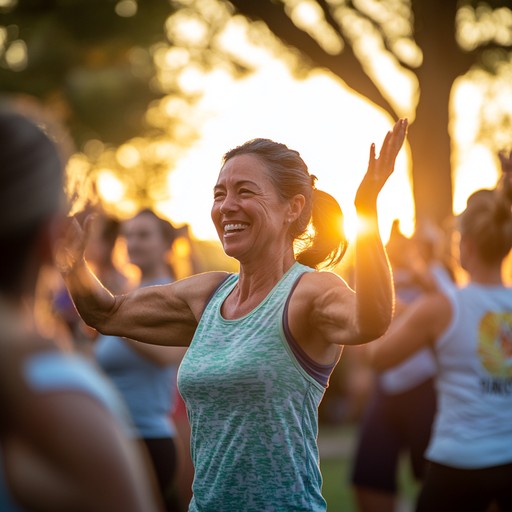Future-proof your bones: what to do in midlife
This article provides research and general advice on osteoporosis.
For advice and an exercise program that is customised to your needs see Christine Morrison at Physioplus.
Even if you think you are fit and healthy in middle age, the reality is that half of women and one fifth of men over 50 will eventually break a bone because of osteoporosis. “We hit peak bone health at about the age of 30,” says Sarah Leyland, clinical adviser to the Royal Osteoporosis Society (ROS), “but then it begins to naturally decline as we get older, especially for women around menopause.”
In a new consensus paper published in the British Journal of Sports Medicine, Dr Katherine Brooke-Wavell — a researcher at Loughborough University’s national centre for sport and exercise medicine — and a panel of experts reviewed evidence to determine what type of activities will best preserve our bones.
In the paper, entitled Strong, Steady and Straight, she describes how strengthening our postural muscles (the core muscles deep in the abdomen, pelvis and back), by performing high-load resistance or high-impact weight-bearing exercises, is vital for maintaining healthy bones.
“The more we move and the greater the variety of those movements the better for our bones,” she says. “For anyone who has not experienced a vertebral fracture, then jumps and jolts, dancing, jogging and gardening are all good for the bones.”
Here are the latest rules for a stronger skeleton:
- Jog three or four times a week
It’s not just bone density that is improved with exercise, but the health of the bone marrow that produces the cells needed for bone formation. Researchers at Deakin University in Australia were the first to show how weight-bearing exercise prevents spinal bone marrow from turning into fatty tissue as we age and they found running to be the most effective activity for achieving this.
Participants who ran 20km per week (or 4.8km on four days a week) saw benefits, while those who ran 50km a week (or 6.4km daily) were shown to have bone marrow eight years younger than non-runners. “If you run very long distances, such as marathon training, there might be an issue with energy deficiency or not getting enough calories and nutrients to support the activity levels, which impacts bone health, but in general jogging is good for the bones,” Brook-Wavell says.
- Try this two-minute circuit of loading exercises
Dr Gallin Montgomery, formerly a researcher in sport and exercise biomechanics at Manchester Metropolitan University who works for the NHS, tested a range of high-impact moves in healthy, early post-menopausal women for a study in the Journal of Electromyography and Kinesiology. “We found that countermovement jumps were most beneficial as they had the highest muscle activation along with the highest impact,” he says.
Completing 30 varied jumps, three times a week is recommended and that would entail doing just a two-minute circuit if you jump every four seconds. Here’s how to do the recommended moves: Countermovement jump: Start standing upright. Bend at the knees and hips, then immediately extend the knees and hips while simultaneously swinging the arms to jump vertically.
Box-drops: Stand on the edge of a knee-height step (or a box of the same height). Drop down, land on two feet and bend the knees as you land. Heel-drops: Stand as high as you can on your toes before dropping onto both your heels to create an impact. Keep knees slightly flexed throughout.
- Lift weights regularly
In the new guidance paper, Brooke-Wavell says that “progressive muscle resistance training” using incrementally heavier weights over weeks and months, should be carried out at least twice a week. “Most research suggests heavyish weights that you can lift for a maximum 8-12 repetitions are the best to use and that you should try to build up to three sets of each exercise,” she says. “Target all major muscle groups in the arms and legs as well as the back muscles to promote strength in the spine.”
Weighted lunges, hip abduction/adduction, knee extension/flexion, back extension, reverse chest fly, and abdominal exercises should ideally be included each week. Don’t bother with resistance bands. “In a study that is yet to be published we saw no effect of resistance bands on building bone mineral density,” Brooke-Wavell says.
- Add hops if you swim or cycle
Non-weight-bearing activities strengthen muscles around the spine, which maintains good posture and prevents falls, but they are not the best bone-builders, Brooke-Wavell says. If you prefer to be on the bike or in the pool, she recommends adding to your routine 50 daily hops on each leg or 50 skips landing on both feet.
“If hopping is not for you, then activities such as badminton, aerobics or dancing that involve at least 50 jumps on each leg will be beneficial.”
- Strengthen postural muscles
It’s important to maintain and build strength in the muscles at the back of the spine that enable to us to stand and lift objects, Brooke-Wavell says. “By keeping the back-extensor muscles strong, research shows you will maintain a more upright posture and prevent the risk of falling.”
A simple exercise is to sit in a chair and, keeping shoulders down, pulling and holding your chin back towards your neck for a few seconds. “A next step is to lie on your front and lift head and shoulders off the ground, hold for five seconds and lower back down, repeating several times daily,” she says. “Pilates and yoga can also help with alignment and muscle strength.”
- Diet matters too
Maintaining bone strength is not just about calcium intake. “Your risk of osteoporosis increases if you’re underweight or overweight, so you also need to keep your body weight in a healthy range,” Leyland says. The following foods are also important:
Prunes: A recent review conducted at Penn State University and published in the journal Advances in Nutrition showed that women who consumed 100g of prunes — about ten prunes — every day for a year improved bone mineral density in their arms and lower spine. Prunes contain minerals, vitamin K, phenolic compounds and dietary fibre, which combine to boost bone health, according to researchers.
Spinach: Popeye binged on it for a reason
Leafy green vegetables: A high intake of is associated with strong, healthy bones. In addition to calcium, says Leyland, they are a rich source of vitamin K1, known to have benefits for bone metabolism. Consuming 200g a day of leafy greens is enough to increase vitamin K status within a month according to a 2020 study by researchers at Edith Cowan University and other Australian institutions.
- Take a vitamin D supplement
“Vitamin D helps your body absorb and use calcium, which gives your bones their strength and hardness,” Leyland says. Between April and September in the UK, most of us get enough by spending ten minutes a day outdoors in the sunlight. Public health advice is that during autumn and winter we should consider taking a daily supplement of Vitamin D.

